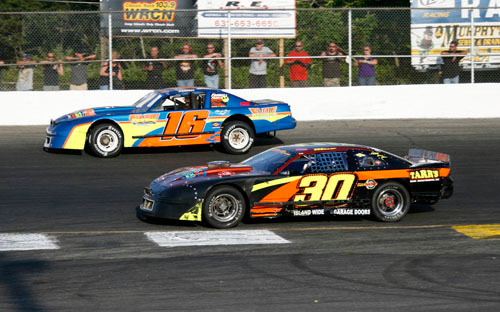Historic win for Franklin Square driver
Daryn Miller’s sixth year on the NASCAR circuit at Riverhead Raceway couldn’t have gotten off to a more inauspicious start with the Franklin Square native failing to complete any of the first three races in the Charger division.
But it wasn’t long before he would make history.
Miller, who graduated from Clarke High School in 1993 and currently resides in West Hempstead, became the first hearing-impaired driver to win a NASCAR-sanctioned race when he topped a field of 16 on May 29. Since then, he’s managed a second-place finish and a couple of fourths.
“It was an incredible night,” recalled Daryn’s father, Bob Miller, who designed a light system that allows Daryn to communicate with him during races. “It was excitement and relief all rolled into one.
“We were knocking on the door for a while” he added. “In the third race this year, Daryn had a nice lead with seven laps to go when the water pump blew. Accidents cost us the first two races. Everything has to break right for a win.”
Bob Finan, who serves as the race announcer and public relations director at Riverhead, said Miller’s long-awaited win brought a smile to everyone’s face. Fans in attendance waved flags and hats in a display of appreciation, and fellow drivers offered their congratulations in the pit area throughout the night. “As historic as Daryn’s victory was, it was more so a feel-good story for he and his father,” Finan said. “They had come so very close on many other occasions only to be denied. It was great to see them finally grab the brass ring.”
Daryn, who has been hearing impaired since birth, receives in-race instructions from his father through a four-light system attached to the car’s dashboard. Bob Miller plants himself outside the fence of turn four and transmits signals via remote control. “Everyone else uses a radio; we can’t,” Bob said. “A driver has to have a way to communicate, and I can signal Daryn faster than other crews can speak instructions to their drivers.”
When Daryn sees the green light illuminate, it’s go time. Yellow alerts him of a caution, and one of two reds tells him whether to pass on the outside or inside. These days, he’s doing more than his share of passing.






